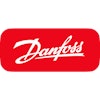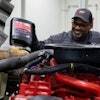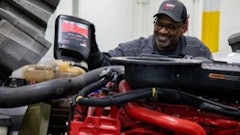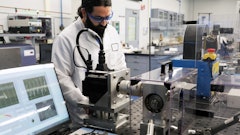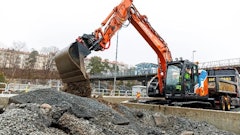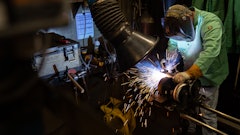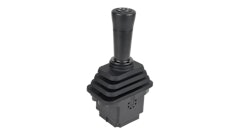The Keweenaw Research Center (KRC) in Calumet, MI, hosted the sixth annual SAE Clean Snowmobile Challenge. Open to university Society of Automotive Engineers (SAE) groups, this past March 10 universities from the United States and three from Canada participated. Conditions for the event were ideal; the U.S. Meteorological Service cooperated by providing plenty of snow for the 500-acre site in Michigan 's Upper Peninsula .
Part of Michigan Tech University in Houghton, MI, the KRC is no Johnny-come-lately in the test world. It has a long and illustrious record, stretching back more than half a century. Originally set up by the Army Corps of Engineers as a place to put machinery through its paces, it was named the Snow and Permafrost Research Establishment (SPIRE) until 1963 when much of the center's staff and research moved to the Cold Regions Research and Engineering Lab (CRREL) in New Hampshire. In 1992, ownership of the facility passed to Michigan Tech. The sprawling facility specializes in laboratory–based evaluations, computer-based modeling and analysis, vehicle testing and evaluation and snow research. To those ends it boasts ice and snowfields, ride-handling loops and 40,000 sq. ft of laboratories.
The U.S. military is still an important client but many major OEMs ranging from Arctic Cat to John Deere to Nissan make use of the center's resources to test their latest designs and products. Component makers, such as tire companies, are all regulars at the test site.
Jay Meldrum has been with KRC for the past eight years. The Ohio native is the center's research director and event organizer. He traces the Clean Snowmobile Challenge's history: "The idea came from Lori Fussel and Bill Paddleford who for three years conducted trials in Wyoming for SAE. The engineering and design competition became an important way to address topical problems in the industry that needed solving.
When it became necessary to move the trials, KRC was the ideal place to handle this important testing -- the area receives more than 250 inches of snowfall each year -- for the last three years the challenge has been held here in Michigan."
Always on the cutting-edge, the scientists at the center have already devised a new, more efficient method to measure noise, a self-regulated standard within the industry. While Washington, D.C. and Ottawa in Canada have not legislated in this area, the states of Wisconsin and Michigan have already laid down noise standards for snowmobiles, based on the current SAE wide-open throttle test.
The new noise measurement technique consists of placing a series of microphones in an imaginary hemispherical pattern around the machine. This has proven to be much more accurate than the traditional method. SAE is now studying this advance with an eye to possibly changing this standard for noise measurement testing.
Snowmobile students
Students who enter the Clean Snowmobile Challenge spend eight months eating, sleeping and breathing snowmobiles. They enter to win and the hands-on education for these young engineers was invaluable.
Andres Soom was the team advisor at the University at Buffalo in New York State. The team from his school won this year's cup. Soom defines the university's role as "Engaging talented students in a new educational experience and further gives them exposure to manufacturers who may very well become future employers. It also gives manufacturers the latest and brightest of cutting-edge thinking."
Brian Belmont was captain of the UB Clean Team from Buffalo. He grew up in Rochester, NY, on the shores of Lake Ontario, a part of the country renowned for phenomenal snowfalls. Belmont climbed aboard his first snowmobile, a Yamaha Phazer, at the tender age of five.
The family eventually moved to Tennessee but Brian Belmont never lost his love for the mighty machines that crunch snow. He entered the University of Buffalo, part of the State University of New York (SUNY) system, as a mechanical engineering major. He has spent three years on the Clean Snowmobile Challenge team.
He relates the six-man and one-woman team's effort: Starting with the chassis of a 2003 Polaris Pro-X machine, they mated it to a 2002 Honda Silver Wing 600cc four-stroke, parallel engine that was then turbocharged and intercooled. Tweaking the mill gave a respectable 70 hp, as good as an average entry trail snowmobile. Next came the transmission which was the P-85 Team roller belt already on the existing chassis. A clutch adaptor was fabricated to permit the transmission of power from the engine to the transmission.
The emissions system was scrutinized and improved. The team installed a Motronic open-loop fuel injection system from Bosch, a Lubrizol three-way catalytic converter, programmed to burn lean, and a reactive muffler, modified from the Honda Silver Wing. "The resulting combination is a snowmobile that is both fun to ride and environmentally conscious," the team abstract read.
Camoplast was the team's source for an experimental tread in the standard size. This one utilized smaller paddles and was made from a softer rubber compound than stock machines.
American Acoustical provided Hushcloth Melamine foam, Hushpanel Millennium plastic, and its Whisperdamp VE vibration material. Their job was to dampen vibration coming from the tunnel and the hood. The hood was a closed affair, fabricated from Kevlar. Half of the noise a snowmobile makes come from the engine and the other half from the track system. These modifications amounted to a 6-decibel decrease in noise compared to a stock snowmobile using the SAE J192 method of testing. When they were done, the team had a 670 lb. machine on its hands and they hoped they would win.
Marketing and testing
Having arrived at KRC, the first event of the four-day challenge was a paper and oral presentation, worth 100 points. The teams gathered around their snowmobiles, now on display in a large showroom. In a real-life marketing type atmosphere, the competitors handed out brochures and did their best to "sell" their custom-built sleds to the manufacturing representatives on hand as well as to 25 to 30 members of the public.
Judging categories consisted of emissions; pass-by noise, fuel economy, acceleration, handling, ride and rider comfort and design presentation.
Belmont said, "We were confident that we'd built a good machine and we knew it would be among the top sleds, but we were surprised to be first."
Win indeed, they did. The UB Clean team captured first in three categories, cleaning up with best fuel economy at 18.2 mph; most practical design and best performance. Belmont is quick to point out that the machine was capable of even better performance, it should have gotten 23 mpg, but the exhaust manifold broke during the 100-mile endurance run. It was repaired but it tied with Clarkson University of Pottsdam, NY, for the honor of quietest snowmobile. It was a disappointment to come in only third in emissions; the team had taken first in that category in 2004.
In addition to winning the cup, the UB Clean Team took the Gage Products award for best fuel economy; the Land and Sea Inc. award for best performance and the BlueRibbon Coalition award for most practical solution. The latter award is given for the best balance achieved in solving noise and emission reductions and cost.
Technology transfer
A savvy engineer-in-training, Belmont really likes "thinking outside the box to develop snowmobiles of the future, creating machines that are still fun to drive and environmentally friendly. The key is to find a happy compromise by keeping up with what the customer wants, staying abreast of the regulations and having fun."
Stressing that "education is the core business of universities," Andres Soom, professor of mechanical and aerospace engineering (and advisor for the winning team), says he takes satisfaction in knowing that the "technology transfer from universities to the snowmobile industry is greatly enhanced through the fresh alternative that this event provides."
Back at KRC, Jay Meldrum recounts the event's importance. "Already the competition has proved that four-stroke machines are cleaner and quieter than two-stroke powered snowmobiles. The trade off is acceleration and weight." Not content with the cleaner ethanol-burning internal combustion engines new changes to the 2006 Challenge rules are changes that will "allow diesel power and zero-emissions categories which translates into fuel-cell or battery powered snowmobiles."
The Clean Snowmobile Challenge will continue to provide an unsurpassed forum in which engineering students and manufacturers will be able to test many excitem fun, too.
